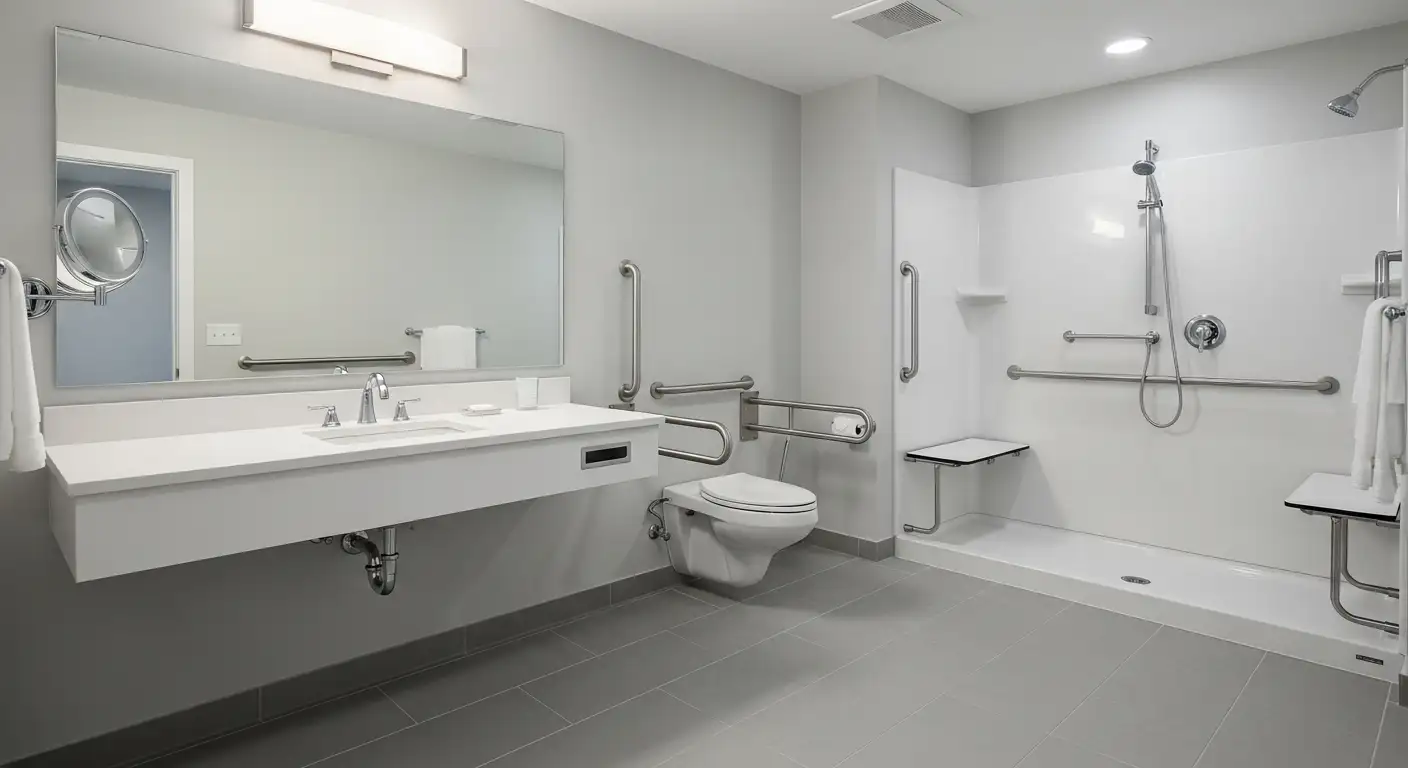Exploring the Complexities of Sensory Processing in Autism
Sensory modulation difficulties are a common aspect of autism spectrum disorder (ASD), impacting how individuals perceive and respond to sensory stimuli. Recognizing these differences is crucial for developing effective interventions and support strategies. This article delves into the core concepts of sensory modulation disorder (SMD) in autism, examining symptoms, assessment tools, physiological underpinnings, and management approaches.
Defining Sensory Modulation Disorder and Sensory Processing in Autism
What are the symptoms and signs of sensory processing issues in autism?
Individuals with autism may exhibit a wide range of sensory processing symptoms that affect their daily interactions and behaviors. These can include hypersensitivity, where they overreact to sights, sounds, textures, or smells, often leading to behaviors such as covering their ears, avoiding certain stimuli, or becoming visibly overwhelmed. Conversely, hyposensitivity may cause some to seek additional sensory input, manifesting through constant movement, loud noises, or mouthing objects. Repetitive movements or stimming are common mechanisms for self-regulation amid sensory overload.
Emotional responses like tantrums, meltdowns, anxiety, or withdrawal are frequent, especially in environments rich in sensory stimulation. These issues can impact communication, social skills, and daily functioning, making tailored strategies and accommodations necessary for support.
Can you have Sensory Processing Disorder (SPD) without autism?
Yes, SPD can occur independently of autism spectrum disorder. It is a neurological condition characterized by atypical sensory processing that can affect children and adults alike. While SPD frequently co-occurs with neurodevelopmental conditions like autism and ADHD, many people experience sensory challenges in isolation. These may involve sensitivities or sensory-seeking behaviors that are disruptive or distressing but are not necessarily linked to any other diagnosis.
Because it is a standalone condition, SPD can benefit from targeted therapies such as occupational therapy and sensory integration techniques, regardless of whether an individual has autism. Recognizing SPD as an independent condition emphasizes the importance of addressing sensory issues directly.
Is sensory modulation disorder (SMD) related to autism?
Sensory modulation disorder (SMD) is fundamentally related to autism, as difficulties in regulating responses to sensory input frequently occur within the autism spectrum. Though SMD is not officially classified as a separate diagnosis, its symptoms—such as hypersensitivity (over-responsiveness) or hyposensitivity (under-responsiveness)—are common in autistic individuals.
Research indicates that sensory processing differences are a core component of autism, included in diagnostic criteria. Many autistic individuals experience these challenges, which can significantly influence their social behavior, emotional stability, and daily life. These sensory issues are often rooted in neural differences, such as altered brain pathways responsible for sensory modulation.
How can sensory issues in autism be reduced or managed?
Managing sensory issues in autism involves a combination of individualized strategies and environmental adjustments. Sensory integration therapy, delivered by occupational therapists, aims to help the brain process sensory signals more effectively. Creating sensory-friendly environments—such as reducing noise, adjusting lighting, and providing calming textures—can prevent overload.
Assistive tools like noise-canceling headphones, fidget toys, weighted blankets, and designated sensory breaks help individuals self-regulate during overwhelming moments. Educating caregivers and educators about sensory needs and implementing consistent routines and accommodations is critical. These interventions support better emotional regulation, reduce behavioral challenges, and improve overall well-being.
What does a sensory meltdown look like in children with SPD?
A sensory meltdown in children with SPD is an intense reaction to sensory overload, often characterized by physical and emotional outbursts. They might scream, cry, lash out, or attempt to escape from the environment. Some children react by withdrawing or engaging in self-stimulatory behaviors such as hand-flapping or rocking.
During a meltdown, the child's responses are typically disproportionate to the triggering stimuli, reflecting an overwhelmed nervous system. These episodes can last several minutes and are often difficult to calm without intervention.
Are sensory processing issues lifelong, and how do they change over time?
Sensory processing issues are not necessarily permanent. Many individuals see an improvement over time as they develop coping strategies and are exposed to interventions. Children often learn to manage sensitivities through therapies like occupational therapy, which teach self-regulation techniques.
Adults can also adapt, using tools and environmental modifications to reduce discomfort. While some sensory sensitivities may persist into adulthood, many individuals report a reduction in severity or the development of effective management strategies, contributing to a better quality of life.
What assessment tools are used for diagnosing sensory modulation disorder in autism?
Assessment of sensory modulation disorder involves a variety of standardized tools and clinical observations. Common questionnaires include the Sensory Profile 2 and the Sensory Processing Measure 2 (SPM-2), which evaluate sensory behaviors across different domains. The Ayres' Sensory Integration and Praxis Test (SIPT) is often used as a gold standard for assessing sensory perception and integration.
Occupational therapists may also use structured observational assessments like the Structured Observations of Sensory Integration (SOSI-M). Parent checklists, developmental histories, and clinical judgments complement these tools. Since no single test is definitive, a comprehensive assessment approach provides the best understanding of an individual's sensory profile.
What treatment and intervention options are available for sensory modulation disorder within autism?
Interventions focus on helping individuals regulate their sensory responses effectively. Occupational therapy with sensory integration techniques is central, utilizing tailored activities to improve sensory processing. Creating sensory-friendly environments, with considerations such as dim lighting, reduced noise, and designated calm spaces, helps prevent overload.
Sensory tools like fidget toys, weighted vests, or noise-canceling headphones support self-regulation. Educating families and teachers about sensory needs and implementing structured routines with sensory breaks enhance daily functioning. Combining environmental modifications, therapy, and consistent support forms an effective approach to managing sensory modulation disorder.
How do sensory processing differences impact individuals with autism?
Sensory processing differences profoundly influence many aspects of life for autistic individuals. Over- or under-responsiveness to stimuli can lead to discomfort, anxiety, and behavioral challenges. For example, hypersensitivity may cause avoidance of social settings or difficulties sleeping, while hyposensitivity might result in sensory-seeking behaviors that can be disruptive.
These differences affect communication, social interaction, and emotional regulation. They can also impact learning and safety, such as difficulty recognizing pain or internal cues. Neurologically, promising research links these differences to atypical brain connectivity and a disrupted balance of neural excitation and inhibition.
Addressing these sensory challenges through targeted interventions enables better adaptation and improved quality of life for autistic people. Overall, understanding and accommodating sensory processing variations are crucial in supporting their development and well-being.
Physiological and Neurological Underpinnings of Sensory Modulation in Autism
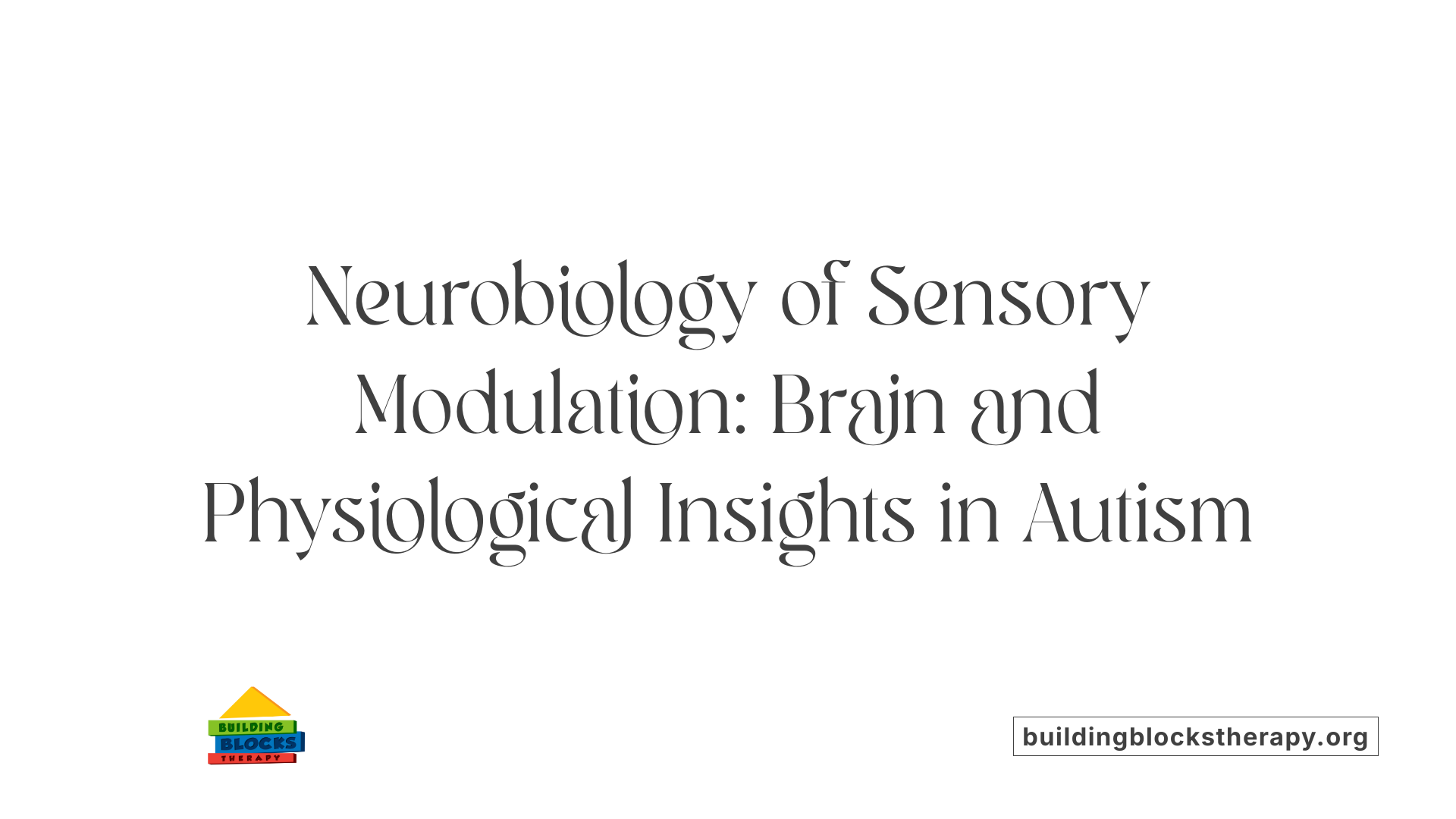
What physiological responses are associated with sensory modulation issues in autism?
Children with autism often exhibit lower baseline electrodermal activity (EDA), reflecting reduced physiological arousal levels. This lower activity may contribute to hypo-responsiveness, where individuals show diminished reactions to sensory stimuli. On the other hand, children with sensory modulation disorder (SMD)—a related but distinct condition—usually present with heightened physiological reactivity, indicating increased sympathetic nervous system activity. These differences in physiological responses suggest that ASD and SMD involve different underlying neurobiological mechanisms. Understanding these response patterns is key to developing effective interventions, as they help identify whether a person is more prone to sensory overload or under-reactivity. Recognizing the role of physiological measures such as EDA helps clinicians tailor strategies to manage sensory sensitivities and support sensory regulation.
How do brain structures and neural pathways differ in autism with sensory modulation issues?
Autism spectrum disorder involves atypical development within specific brain regions responsible for processing sensory input. Notably, abnormalities in both white matter and gray matter are commonly observed, affecting neural circuits that coordinate sensory information. These structural differences can disrupt the normal functioning of neural pathways, leading to dysfunctions in sensory integration and modulation.
Cortical excitation-inhibition imbalance (E/I imbalance) is a significant factor contributing to these issues. This imbalance hampers the brain’s ability to filter relevant sensory information from irrelevant stimuli, resulting in hypersensitivity or hyposensitivity. Moreover, disruptions in neural pathways involved in sensory gating — the brain’s ability to regulate the flow of sensory stimuli — can cause sensory overload. Conversely, impaired connectivity can also result in reduced responsiveness, making it hard for individuals to respond appropriately to sensory input. These neuroanatomical variations underscore the importance of understanding brain connectivity when devising therapies tailored to sensory processing challenges in ASD.
What are the neurobiological mechanisms underlying sensory modulation in autism?
The core neurobiological mechanisms involve an imbalance between cortical excitation and inhibition (E/I imbalance). This disruption affects neural circuits that normally regulate sensory input, resulting in altered perception and responses. In individuals with autism, excessive cortical excitation or insufficient inhibitory activity can lead to heightened sensory sensitivities, while the opposite may cause hyposensitivity.
Altered pathways linked to sensory gating also play a central role. These mechanisms typically help the brain prioritize important stimuli and ignore irrelevant ones. When sensory gating is dysfunctional, sensory overload can occur, leading to distress or behavioral issues. Additionally, impaired multisensory integration—the process of combining information from different senses—further complicates perception. This impairment might cause difficulties in processing complex sensory environments, influencing social interaction and behavior.
Collectively, these mechanisms reveal a neurobiological basis for the diverse sensory symptoms observed in autism, emphasizing the need for targeted approaches that address these underlying neural differences.
How do physiological measures like electrodermal activity contribute to understanding sensory modulation in autism?
Electrodermal activity (EDA) serves as an important physiological marker of autonomic nervous system activity related to sensory responses. In autism, studies show that baseline EDA levels tend to be lower, indicating diminished physiological arousal and possibly contributing to sensory under-responsiveness.
Conversely, children diagnosed with sensory modulation disorder (SMD) often display higher EDA reactivity, correlating with increased sympathetic nervous system activity and sensory hypersensitivity. These physiological differences help distinguish between hypo- and hyper-responsive sensory profiles.
While parent-reported behavioral assessments are valuable, physiological measures such as EDA provide an objective understanding of sensory reactivity. This dual approach enhances the precision of diagnosis and intervention planning. Although correlations between subjective reports and physiological data are still being explored, incorporating measures like EDA allows clinicians to better understand individual sensory thresholds and tailor treatments to better regulate arousal states, ultimately improving daily functioning and quality of life for individuals with autism.
Environmental Strategies and Supportive Modifications for Sensory Regulation
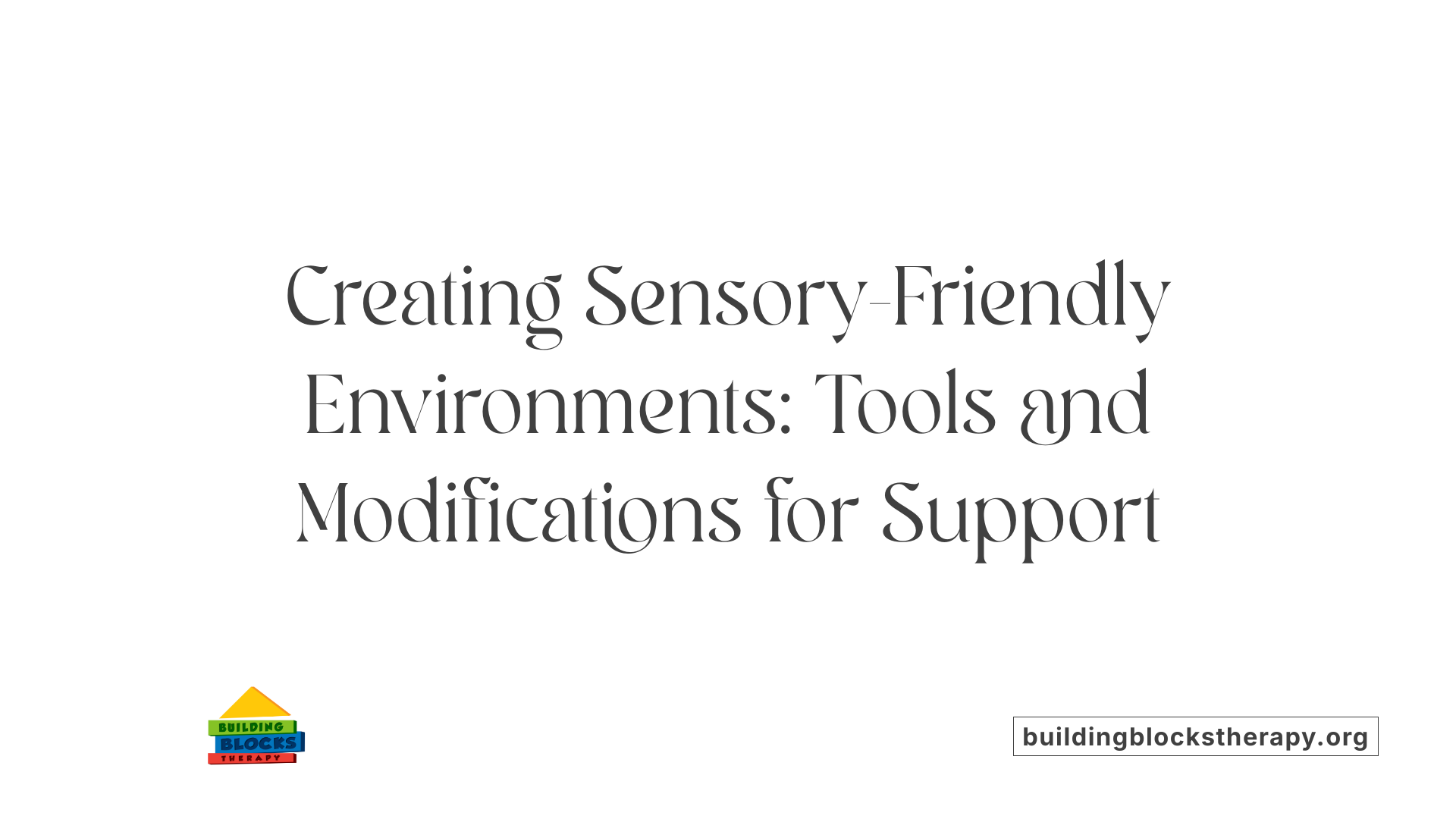
Creating sensory-friendly environments at home and school
Creating spaces that cater to sensory needs can significantly improve comfort and participation for autistic individuals. At home and in schools, reducing overwhelming stimuli is essential. This involves using adjustable lighting—like dimmers or natural light sources—and soundproofing with acoustic panels or soft furnishings to minimize noise. Tactile-friendly materials such as soft fabrics or textured walls can provide comforting sensory input. Designated quiet zones or sensory corners give individuals a safe retreat when they feel overstimulated. Consistent routines and predictable environments help reduce anxiety, fostering a sense of security and control.
Use of assistive technologies and tools
Assistive tools play an important role in managing sensory sensitivities. Noise-canceling headphones help individuals cope with loud or unpredictable sounds. Sunglasses or tinted lenses can alleviate visual overstimulation, especially in bright environments. Weighted vests, blankets, and lap pads offer calming deep pressure input that supports sensory integration. Fidget devices and tactile toys help maintain focus and self-regulation by providing sensory input that can comfort or distract when necessary.
Environmental modifications to reduce sensory overload
Adjustments to the environment are crucial for sensory regulation. Dimming lights, using natural lighting when possible, and controlling sound levels create calmer spaces. Access to tactile tools and calming stimuli, such as soft textiles or textured surfaces, can help meet sensory needs. Providing a designated sensory corner equipped with various tools and calming visual aids gives individuals a dedicated space to self-soothe. Routine adjustments, including scheduled sensory breaks and structured activities, help prevent overload and promote emotional regulation.
Importance of individualized sensory plans and accommodations
Every person with sensory modulation difficulties has unique needs. Developing individualized plans in collaboration with occupational therapists ensures that accommodations are tailored effectively. These plans outline specific triggers, preferred calming strategies, and necessary environmental modifications. Regular assessments and adjustments allow support to evolve with the individual's changing needs. Such personalized approaches empower individuals to better manage their sensory sensitivities, fostering independence, participation, and emotional well-being.
| Aspect | Strategies | Details |
|---|---|---|
| Creating environments | Light and sound control | Dimmer switches, acoustic panels |
| Sensory tools | Noise-canceling headphones, weighted blankets | Regulate auditory and tactile input |
| Environment modifications | Sensory corners, quiet zones | Safe spaces for breaks |
| Individualized plans | Custom sensory strategies | Occupational therapy collaboration |
Supporting sensory regulation through these methods enhances comfort, engagement, and overall quality of life for those with autism. By combining environmental modifications with assistive technologies and tailored plans, caregivers can create inclusive and responsive spaces that support sensory health and development.
Research Evidence and Future Directions in Sensory Processing in Autism
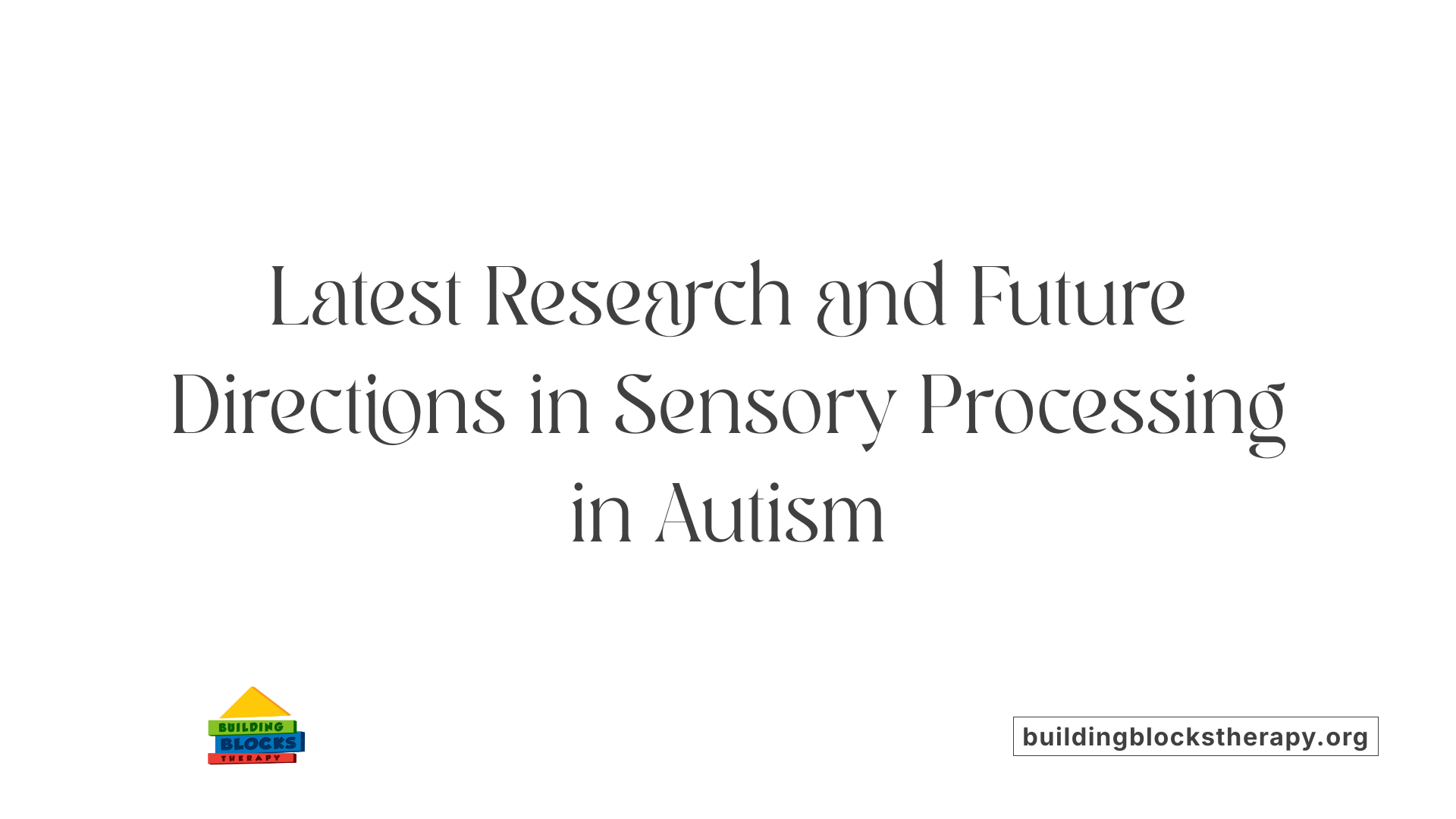
What do scientific research findings reveal about sensory symptoms and their prevalence in autism?
Research shows that sensory symptoms are extremely common among individuals with autism, with estimates that approximately 90% of autistic people experience some form of sensory processing difference. These differences include hypersensitivity (over-responsiveness), hyposensitivity (under-responsiveness), and sensory craving behaviors. Studies comparing autistic individuals with typically developing peers consistently identify significant sensory behavior disparities. Among these behaviors, under-responsiveness tends to be the most noticeable, followed closely by over-responsiveness and sensation-seeking behaviors. Variability in research findings can be influenced by factors such as age, severity of autism, and the type of control group used in studies. For example, children between 6-9 years old tend to exhibit the most intense sensory symptoms. Larger sample sizes with over 80% of participants diagnosed with autism also tend to show more pronounced sensory differences. These findings emphasize the importance of considering individual developmental stages and severity levels when evaluating sensory processing capabilities within autism, guiding more personalized assessment and intervention strategies.
Summary and Concluding Remarks
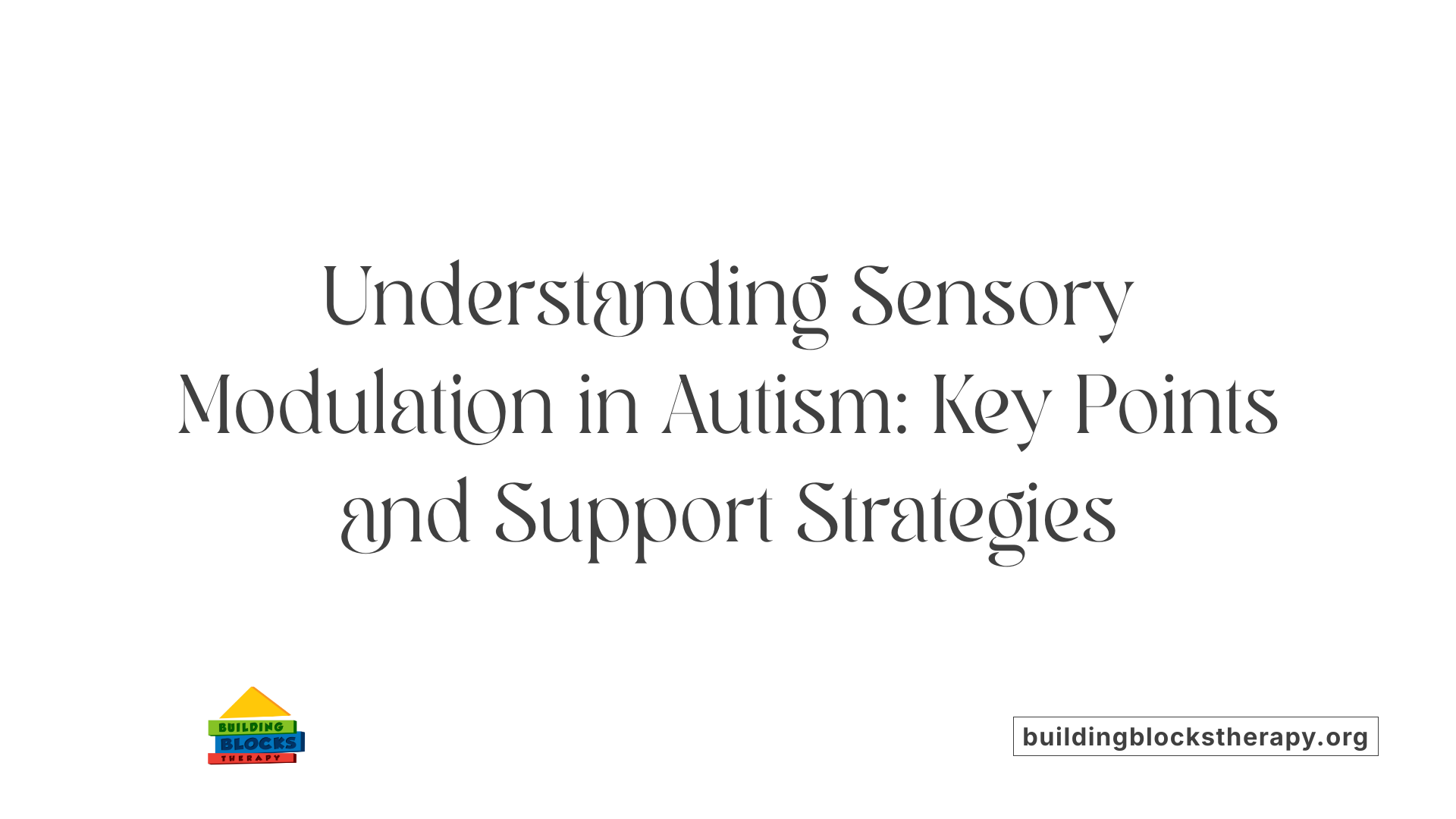
What are the key points to remember about sensory modulation in autism?
Sensory modulation difficulties are fundamental to autism spectrum disorder (ASD), affecting how individuals perceive, organize, and respond to sensory information. These manifestations include hypersensitivity (over-responsiveness), hyposensitivity (under-responsiveness), and behaviors seeking sensory input. Such differences can significantly influence daily activities, learning processes, and social interactions. Underlying these behaviors are neurobiological factors like alterations in neural pathways and imbalances between cortical excitation and inhibition. Recognizing these factors is essential, as they shape the diverse sensory experiences among autistic individuals. Tailored interventions—like sensory integration therapy—and environmental adaptations are vital for supporting their functional needs. Raising awareness and implementing sensory-friendly practices create inclusive environments, fostering better integration and improved quality of life.
Why are awareness and appropriate supports crucial for individuals with sensory modulation challenges?
Understanding sensory sensitivities enables caregivers, educators, and clinicians to construct personalized strategies that help manage discomfort and facilitate participation. Proper supports—such as sensory diets, the use of assistive tools, and environmental adjustments—are crucial in enabling individuals to regulate their responses, avoiding distress and meltdowns. These accommodations support emotional well-being and foster independence. Increased awareness also cultivates acceptance and inclusion, allowing autistic individuals to advocate for their needs confidently. Overall, a comprehensive support system rooted in understanding sensory differences ensures equitable access to opportunities and enhances everyday functioning.
How can society promote inclusive and sensory-friendly environments?
Society can foster inclusivity by adopting universal design principles that consider diverse sensory profiles. Practical measures include establishing quiet zones in public spaces, minimizing harsh lighting, reducing loud noises, and providing sensory tools such as noise-canceling headphones or sensory rooms. Education campaigns boost public understanding of sensory differences, encouraging patience and acceptance. Schools and workplaces can implement policies offering sensory breaks, flexible routines, and accessible supports. Engaging autistic individuals and experts in designing these environments ensures that modifications address actual needs effectively. These collective efforts reduce sensory overload, facilitate participation, and build communities where everyone feels valued and supported.
What future developments can improve understanding and management of sensory modulation issues in autism?
Ongoing research into neuroimaging, genetic markers, and physiological assessments holds promise for more precise identification of sensory modulation differences. Advanced technologies, like virtual reality, offer controlled environments for assessment, intervention, and skill development. Data-driven approaches, including monitoring electrodermal activity, can guide personalized strategies to regulate sensory responses more effectively. Expanding research to include adult populations and diverse cultural groups enhances the applicability of interventions. Integrating insights from neuroscience, occupational therapy, and environmental design can lead to comprehensive support systems. Continued advocacy and policy work will bridge research gaps, ensuring advancements translate into practical benefits, ultimately improving the lives of those with sensory processing challenges.
Final Thoughts on Supporting Sensory Needs in Autism
Understanding and addressing sensory modulation disorder in autism is vital for fostering inclusive environments and improving individual well-being. Through comprehensive assessment, evidence-based interventions, and environmental adaptations, caregivers and professionals can significantly enhance the quality of life for autistic individuals. Continued research and societal awareness are key to developing innovative solutions and promoting acceptance. Recognizing the neurobiological foundations of sensory differences not only deepens compassion but also guides tailored support strategies that empower each person to thrive. Emphasizing sensory-friendly practices and accommodations ultimately paves the way toward a more inclusive and understanding society.
References
- Sensory processing disorder (SPD) - Autism Speaks
- Sensory Integration in Autism Spectrum Disorders
- Sensory Processing Differences in Individuals With Autism Spectrum ...
- Sensory issues - Autism Speaks
- A meta-analysis of sensory modulation symptoms in individuals with ...
- What is Sensory Modulation Disorder? - Autism Parenting Magazine
- Physiological and behavioral differences in sensory processing





